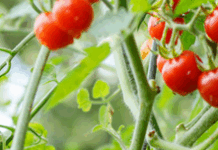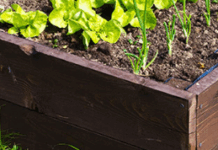K-State horticulture expert outlines best choices for fighting stubborn lawn weed
MANHATTAN, Kan. – Herbicides designed to protect home lawns and other turf areas from crabgrass are often misunderstood, says Kansas State University horticulture expert Ward Upham.
“Crabgrass preventers are just that – preventers,” Upham said. “With few exceptions, they have no effect on existing crabgrass plants, so they must be applied before germination.”
Crabgrass preventers are another name for pre-emergence herbicides that prevent crabgrass seeds from developing into mature plants, he said.
“Many people have a somewhat foggy idea of how they work and assume they kill the weed seed,” Upham said. “That is not the case. They do not kill the seed or even keep the seed from germinating, but rather they kill the young plant after it germinates. Therefore, they do not prevent germination, but prevent emergence.”
For that reason, Upham said the timing is critical when choosing to apply crabgrass preventers.
“Microorganisms and natural processes begin to gradually break them down soon after they are applied,” he said. “If some products are applied too early, they may have lost much of their strength by the time they are needed. Most crabgrass preventers are fairly ineffective after about 60 days, but there is considerable variation between products.”
For most of Kansas, crabgrass typically begins to germinate around May 1 or a little later, Upham said. So, he adds, “April 15 is normally a good target date for applying preventer.”
“Even better,” he said, “base timing on the bloom of ornamental plants. The Eastern Redbud tree is a good choice; when the trees in your area approach full bloom, apply crabgrass preventer. A follow-up application will be needed about 8 weeks later unless you are using Dimension or Barricade.”
Upham said products that do not require a follow-up application include pendemethalin and Team.
“Dimenson and Barricade are the only two products that give season-long control of crabgrass from a single application,” Upham said. “In fact, they can be applied earlier than April 15 and still have sufficient residual strength to last the season. Barricade can even be applied in late fall for crabgrass control the next season.”
Dimension can be applied as early as March 1, he added.
Upham and his colleagues in K-State’s Department of Horticulture and Natural Resources produce a weekly Horticulture Newsletter with tips for maintaining home landscapes. The newsletter is available to view online or can be delivered by email each week.
Interested persons can also send their garden- and yard-related questions to Upham at wupham@ksu.edu, or contact your local K-State Research and Extension office.
-30-
FOR PRINT PUBLICATIONS: Links used in this story
K-State Horticulture Newsletter, https://hnr.k-state.edu/extension/info-center/newsletters/index.html
K-State Research and Extension local offices, www.ksre.k-state.edu/about/stateandareamaps.html
K State Research and Extension is a short name for the Kansas State University Agricultural Experiment Station and Cooperative Extension Service, a program designed to generate and distribute useful knowledge for the well being of Kansans. Supported by county, state, federal and private funds, the program has county extension offices, experiment fields, area extension offices and regional research centers statewide. Its headquarters is on the K State campus in Manhattan. For more information, visit www.ksre.ksu.edu. K-State Research and Extension is an equal opportunity provider and employer.
Story by:
Pat Melgares
785-532-1160
melgares@ksu.edu
For more information:
Ward Upham
785-532-6173
wupham@ksu.edu





